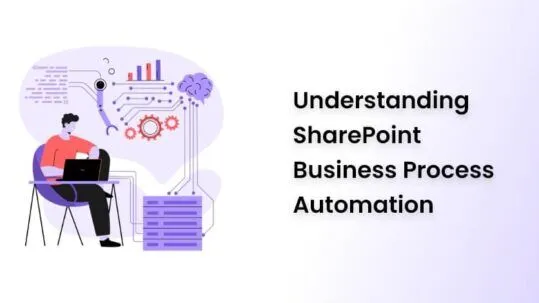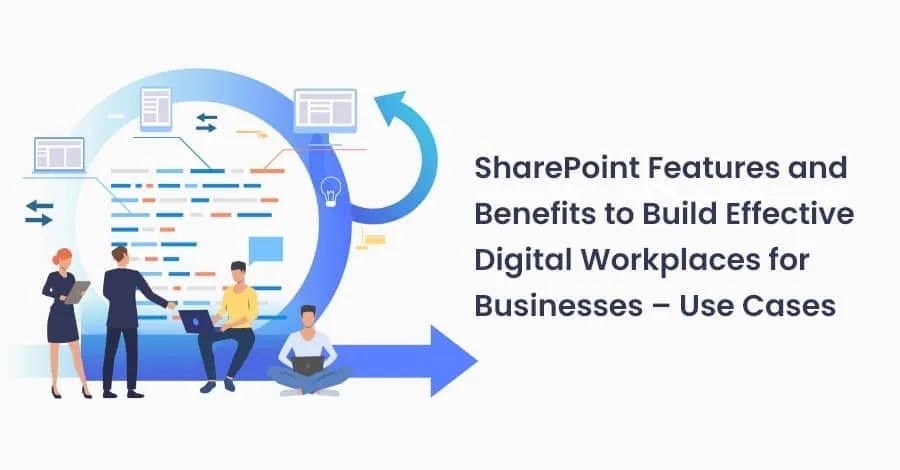
16 May SharePoint for Project Management: Streamline Your Projects
16 May 2023

Project management can be a daunting task, especially when dealing with large and complex projects. Keeping track of multiple tasks, deadlines, documents, and team members can quickly become overwhelming. This is where SharePoint comes in as a powerful tool that can help streamline project management and make it easier for teams to collaborate and manage tasks.
SharePoint is a web-based platform developed by Microsoft that provides a centralized location for all project-related documents, making it easy for team members to access the information they need. It also allows teams to create and manage tasks, collaborate on projects, and track project progress in real-time. SharePoint’s integration capabilities allow it to connect with other tools, such as Microsoft Project, to provide even more advanced project management capabilities.
In this article, we will explore how SharePoint can be used for project management and provide best practices for using SharePoint effectively. Whether you’re a small team or a large organization, it can help you streamline your projects and achieve your goals.
What is SharePoint Project Management?
SharePoint project management refers to the use of Microsoft SharePoint, a web-based collaboration and document management platform, to facilitate and streamline project management activities. SharePoint provides a range of features and functionalities that can be leveraged to effectively manage projects, teams, tasks, documents, and communication.
With SharePoint, project managers and team members can create project sites or subsites, which serve as dedicated workspaces for a specific project. These sites act as central repositories for project-related information, documents, tasks, discussions, and other project components.
How can SharePoint help with project management?
SharePoint has a several features that make it an ideal tool for project management. Here are some of the key benefits of using SharePoint for project management:
- Centralized document management
One of the biggest challenges of project management is keeping track of all the documents related to a project. SharePoint provides a centralized location for all project-related documents, making it easy for team members to access the information they need. Documents can be stored in SharePoint libraries, which can be organized in a logical and intuitive way.
- Task management
SharePoint allows teams to create and manage tasks for each phase of a project. Tasks can be assigned to specific team members, and deadlines can be set to ensure that everyone stays on track. Team members can also receive notifications when tasks are assigned or updated, making it easy to stay informed and up-to-date.
- Collaboration
SharePoint makes it easy for team members to collaborate on projects, regardless of their location. Team members can share documents, participate in discussions, and even work on documents simultaneously. This makes it easier for teams to stay connected and work together, even if they are in different locations.
- Project tracking
SharePoint provides real-time tracking of project progress, allowing team members to monitor the status of a project at any time. This makes it easy to identify potential issues and take corrective action before they become bigger problems.
- Integration with Microsoft Office Suite
SharePoint seamlessly integrates with various Microsoft Office applications, such as Word, Excel, PowerPoint, and Outlook. This integration allows for the creation and editing of Office documents directly within SharePoint, promoting productivity and eliminating the need to switch between different platforms.
- Workflow Automation
SharePoint’s workflow capabilities enable the automation of routine project management processes, such as document approval, task assignment, and notifications. Workflows can be designed and customized using SharePoint Designer or Microsoft Power Automate, streamlining project workflows, reducing manual effort, and improving efficiency.
- Version Control and Document History
SharePoint offers robust version control and document history features, allowing project teams to track and manage changes made to documents over time. This functionality enables teams to view previous versions of documents, compare changes, and restore earlier versions if needed. It ensures data integrity, enhances collaboration, and provides an audit trail for project documentation.
Best practices for using SharePoint for project management
To get the most out of SharePoint for project management, it’s important to follow best practices. Here are some tips for using SharePoint effectively:
- Use a logical structure for document libraries
Organize your document libraries in a logical and intuitive way to make it easy for team members to find the documents they need. Use consistent naming conventions for documents and folders to make it easier to search for them later.
- Assign tasks to specific team members
Be sure to assign tasks to specific team members and set deadlines for completion. This will help ensure that everyone knows what they are responsible for and when they need to complete their tasks.
- Communicate regularly
Regular communication is essential for effective project management. Use SharePoint to facilitate communication among team members, and make sure everyone is up-to-date on project status and any changes that have been made.
- Implement security and access controls
Ensure that sensitive project information is protected by configuring appropriate security settings and access controls. Assign permissions at the site, library, and item levels to restrict access to authorized individuals. Regularly review and update user permissions as project roles change.
- Foster knowledge sharing and documentation
Encourage team members to document lessons learned, best practices, and other project-related knowledge. SharePoint’s wiki functionality or a dedicated knowledge base can be used for this purpose. This knowledge repository can be referenced by future projects and contribute to organizational learning.
- Integrate with other tools and systems
Explore integrations with other project management tools, such as Microsoft Project or Jira, to enhance your project management capabilities. Integrate SharePoint with email and calendar systems for better communication and scheduling.
- Train and support team members
Provide comprehensive training on SharePoint’s project management features and functionalities. Ensure team members are familiar with the site structure, document management practices, and collaboration tools. Offer ongoing support and address any questions or issues promptly.
- Regularly maintain and update the SharePoint environment
Regularly review and update your SharePoint site to ensure it remains relevant and aligned with project needs. Archive or delete outdated information, update workflows and configurations, and perform regular backups to safeguard project data.
Conclusion
SharePoint is a powerful tool that can be used to streamline project management and make it easier for teams to collaborate and manage tasks. By following best practices and taking advantage of SharePoint’s features, teams can improve productivity and complete projects more efficiently. Whether you’re a small team or a large organization, SharePoint can help you streamline your projects and achieve your goals.
if you’re looking for a powerful tool to streamline your project management, SharePoint is the way to go. And if you need help with designing and implementing a custom solution that meets your specific needs. Contact us today to learn more about how we can help you take your project management to the next level.
Our Related Posts
SharePoint Online vs on Premise – Which is The Best Choice For Business?
As business technology advancements grow, so does the….
Understanding SharePoint Business Process Automation
In today’s business world, efficiency and productivity are ….
SharePoint Features and Benefits to Build Effective Digital Workplaces – Use Cases
What is SharePoint? It is an online application which helps in ….





No Comments